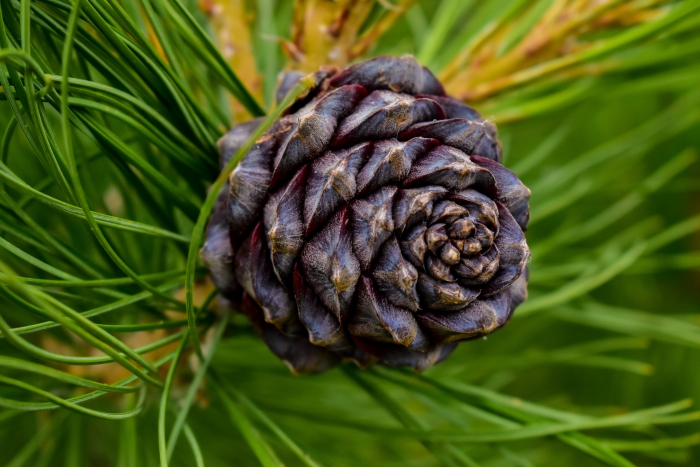Siberian Pine
(Pinus sibirica)
Siberian Pine (Pinus sibirica)
/
/

© Marina
CC BY-SA 4.0
Image By:
© Marina
Recorded By:
Copyright:
CC BY-SA 4.0
Copyright Notice:
Photo by: © Marina | License Type: CC BY-SA 4.0 | License URL: http://creativecommons.org/licenses/by-sa/4.0/ | Uploader: marina_photo_kazan | Publisher: iNaturalist |

























Estimated Native Range
Summary
Pinus sibirica, commonly known as Siberian pine, is a hardy evergreen tree belonging to the white pine group. It is native to the taiga of the Siberian region, which includes areas from the Ural Mountains to the Stanovoy Range and extends from Igarka in the north to central Mongolia in the south. This species thrives in subalpine zones and is adapted to cold climates, growing at altitudes of 328-7874 feet (100-2400 meters). Siberian pine can reach impressive heights of 98-131 feet (30-40 meters) and is known for its longevity, with some specimens living up to 850 years.
The Siberian pine is notable for its straight trunk and conical form, becoming more rounded with age. Its needles are arranged in bundles of five and are dark green, contributing to its dense foliage. The tree produces elongated cones, and its seeds—commonly known as cedar nuts—are a valuable food source, dispersed by birds such as nutcrackers. Siberian pine is highly resistant to white pine blister rust, a common disease among pines. The seeds are not only dispersed by wildlife but also harvested for human consumption, known for their rich flavor and nutritional value. In cultivation, Siberian pine is valued for its ornamental qualities in cold climates, where it can serve as a windbreak or specimen tree. It requires full sun to partial shade, well-drained soil, and can tolerate dry conditions once established.CC BY-SA 4.0
The Siberian pine is notable for its straight trunk and conical form, becoming more rounded with age. Its needles are arranged in bundles of five and are dark green, contributing to its dense foliage. The tree produces elongated cones, and its seeds—commonly known as cedar nuts—are a valuable food source, dispersed by birds such as nutcrackers. Siberian pine is highly resistant to white pine blister rust, a common disease among pines. The seeds are not only dispersed by wildlife but also harvested for human consumption, known for their rich flavor and nutritional value. In cultivation, Siberian pine is valued for its ornamental qualities in cold climates, where it can serve as a windbreak or specimen tree. It requires full sun to partial shade, well-drained soil, and can tolerate dry conditions once established.CC BY-SA 4.0
Plant Description
- Plant Type: Tree
- Height: 80-100 feet
- Width: 20-30 feet
- Growth Rate: Slow, Moderate
- Flower Color: N/A
- Flowering Season: Non-Flowering
- Leaf Retention: Evergreen
Growth Requirements
- Sun: Full Sun
- Water: Medium
- Drainage: Fast, Medium
Common Uses
Border Plant, Drought Tolerant, Erosion Control, Low Maintenance
Natural Habitat
Native to the taiga and subalpine zones of the Siberian region
Other Names
Common Names: Siberian Cedar, Siberian Stone Pine, Kedr, Kedr Sibirskij, Sibirska Limba, Xian Bei Wu Zhen Song
Scientific Names: , Pinus sibirica, Pinus arolla, Pinus cembra f. coronans, Pinus cembra f. kairamoi, Pinus cembra subsp. sibirica, Pinus cembra subsp. sibirica, Pinus cembra var. sibirica, Pinus cembra var. sibirica, Pinus cembra var. sibirica
GBIF Accepted Name: